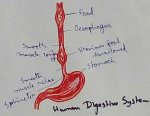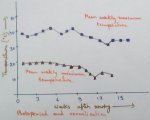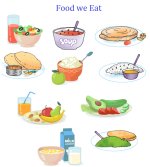Worksheet on Interdependence of Plants and Animals
Worksheet on interdependence of plants and animals contains various types of questions on how plants and animals depend on each other.
We know, human beings depend upon plants and animals for food and other requisites. So, as plants and animals depend on each other.
I. Answer the following questions:
(i) What do the herbivorous animals eat?
(ii) Which kind of animals are called the first order consumers?
(iii) How can we take care of plants?
(iv) How can we take care of domestic animals?
(v) How can we help wild animals?
II. Fill in the
blanks:
(i) Too much heat and too much cold, both are harmful for___________.
(ii) Plants should get sufficient ___________.
(iii) We should protect the ___________ and plants.
(iv) The ___________ animal should be treated in ___________ hospitals.
(v) National parks have been set up for ___________.
III. There are three alternative answers for each question. Mark (√) the correct one:
1. We should take care of plants and animals, because -
(i) they are living beings.
(ii) they maintain balance in the nature.
(iii) they provide us food.
2. Water is necessary for germination, rapid growth and healthy life of -
(i) plants
(ii) cleanliness
(iii) sunlight
Check the answers of the worksheet on interdependence of plants and animals:
Answers:
I. (i) Herbivorous animals eat plants and plant-products.
(ii) Plant-eating animals are the first order consumers.
(iii) We should take good care of plants by the following ways:
(a) watering
(b) protecting from heat and cold, insects, diseases etc.
(c) providing sufficient amount of sunlight, manures etc. .
(iv) We should take care of domestic animals by the following ways:
(a) providing airy and lighted sheds
(b) keeping the sheds clean
(c) providing nutritive fodder
(d) giving proper treatment to sick pets.
(v) Wild animals should not be hunted down.
II. (i) plants
(ii) sunlight
(iii) animals
(iv) sick, veterinary
(v) wild life
III. 1. (ii) they maintain balance in the nature.
2. (i) plants
From Worksheet on Interdependence of Plants and Animals to HOME PAGE
Recent Articles
-
Eleventh Grade | Eleventh Grade Science | Eleventh Grade Math
Jun 27, 25 12:26 AM
Eleventh grade biology has been designed in accordance with the recommended topics. We will cover all the topics in biology very exciting and interesting way. -
Explain Digestion of Food | Salivary Glands | Oesophagus | Stomach
Jun 27, 25 12:20 AM
Before the digestion is start by the different enzymes secreted from the different digestive glands food must be turned and chut or mixed with saliva inside the mouth. -
Explain Human Digestive System | Mouth | Tongue | Pharynx | Teeth
Jun 21, 25 01:15 PM
Digestive system is a system of alimentary canal and digestive glands. Alimentary canal- alimentary canal is a tube of variable diameter having muscular wall and glandular epithelial tissues which sta… -
Vernalisation in Plants | Definition | Mechanism | Devernalization |
Jun 18, 25 01:34 PM
Definition of vernalisation- The change of flowering habit due to the low temperature treatment is known as vernalisation. This is a physiological process which was denoted by Clipart in 1857 invite b… -
The Food We Eat | Food we Get from Plants and Animals | Carbohydrates
Jun 15, 25 03:20 PM
What are the food that we should eat? Find out the names of ten food items in the word maze. Write the names in the correct column of the table given below. Food we get from plants Food we get from an…




New! Comments
Have your say about what you just read! Leave me a comment in the box below.